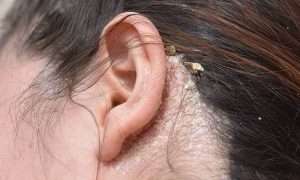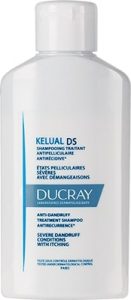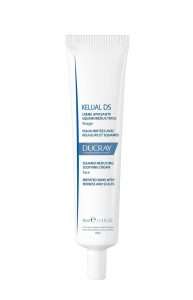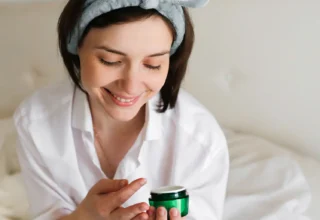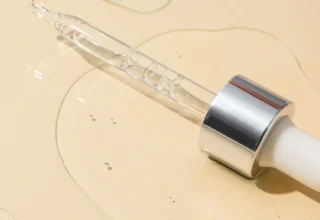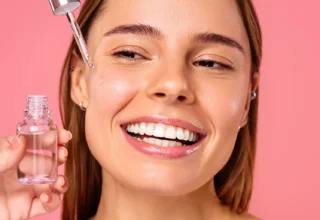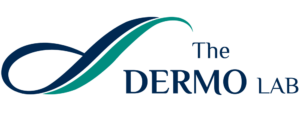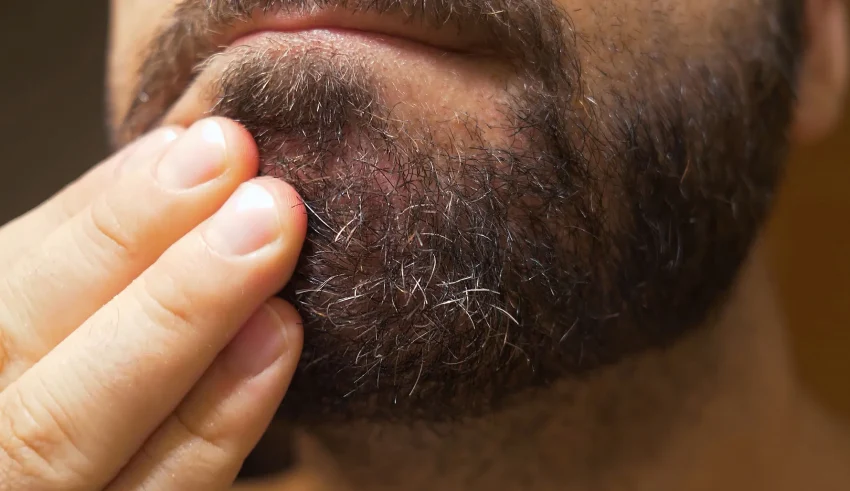
Seborrheic dermatitis is a very common skin condition characterized by redness, flaky patches and dandruff. It is a chronic form of eczema, most often affecting the scalp, and can also develop in oily areas of the body.
Seborrheic dermatitis is also referred to as dandruff and seborrheic eczema. In infants, this condition is known as “cradle cap” and causes crusty, scaly patches on the scalp.
In this article, and in collaboration with the dermatologist Dr. Ahmed Fouad Sothy, we will take a closer look at what seborrheic dermatitis is, its symptoms, and its treatment.
What is seborrheic dermatitis?
Seborrheic dermatitis is a common, non-contagious and easily managed skin condition. This type of dermatitis causes itchy, red patches and oily flakes on the skin, as well as white or yellow, crusty or powdery flakes on the scalp.
According to Dr. Ahmed Fouad Sothy, seborrheic dermatitis is a lifelong skin condition that occurs most often on the face, around the nose, behind the ear and on the chest.
This condition occurs most often in infants under three months of age and in adults between the age of 30 and 60. It is more prevalent in men than in women and in Caucasians more than in African-Americans.
If you were born with oily skin, you are more likely to suffer from this type of dermatitis.
What are the symptoms of this skin condition?
The signs and symptoms of seborrheic dermatitis include:
- Scaling (dandruff) on the scalp, hair, eyebrows, beard, or mustache
- Red skin
- Itching
- Yellow, crusty scales on the heads of infants (cradle cap)
- Blepharitis (scaly redness on the edge of the eyelids)
- Pink patches of scales on both sides of your face
- Scaly patches on your chest and hairline in the shape of a flower petal or ring
- Inflamed hair follicles on the cheeks and upper half of the trunk
Signs and symptoms can be more severe if you are stressed, and they tend to get worse during cold, dry seasons.
What causes seborrheic dermatitis?
Researchers aren’t sure what exactly causes seborrheic dermatitis. They believe there may be multiple causes. The factors that appear to play a role are:
- A type of yeast called Malassezia, which is present on everyone’s skin, but overgrows in some people.
- An increased level of androgens.
- An increase in skin lipid levels.
- An inflammatory reaction.
- A family history.
How is seborrheic dermatitis diagnosed?
Seborrheic dermatitis is an easy condition to diagnose because of how it looks on the affected skin and where it appears on your body. No blood, urine, or allergy tests are necessary. Your dermatologist may perform a skin biopsy to exclude other diseases if your condition does not respond to treatment.
Other common skin conditions that can be confused with seborrheic dermatitis include:
- Psoriasis
- Eczema
- Rosacea
- Tinea capitis (ringworm of the scalp)
- Systemic lupus erythematosus
Does diet affect seborrheic dermatitis?
Dr. Ahmed Fouad Sothy says that diet can have an effect on seborrheic dermatitis and recommends avoiding carbs, sugars, and alcohol.
Stay as healthy as possible to prevent flare-ups: that means eating healthy foods and cutting out waste!
So, by watching your carb intake and avoiding too many inflammatory foods, like sugar and alcohol, you can strengthen your immune system.
How to get rid of seborrheic dermatitis?
In teens and adults, seborrheic dermatitis usually does not go away on its own without treatment. The type of treatment depends on the area of the body that is affected and the severity of your condition.
The goal of treatment is to reduce the visible signs and symptoms of seborrheic dermatitis. Medicated shampoos and creams are the main treatments for this skin condition.
You may need to use a combination of these treatments:
1- Scalp treatment
For mild cases, look for dandruff shampoos containing selenium, zinc pyrithione, or coal tar. Wash your hair twice a week or as directed on the product label. For long-term control, your healthcare provider may recommend antifungal shampoos containing ciclopiroxolamine or ketoconazole. These shampoos are used three times a week for several weeks to clear up dandruff, then once a week or every two weeks to prevent flare-ups. Your healthcare provider will give you specific instructions for use.
Here’s the best seborrheic dermatitis shampoo that contains ciclopiroxolamine to fight the symptoms of this skin condition, such as dandruff, and relieve your irritated scalp.
Kelual DS Anti-Dandruff Treatment Shampoo
For moderate to severe cases, look for shampoos containing betamethasone valerate, clobetasol, fluocinolone, or fluocinolone solution. Shampoo your hair as directed. Some products are used daily, others are used twice a day for two weeks and then twice a week.
2- Face and scalp treatment
Treatments include topical antifungals, corticosteroids, and calcineurin inhibitors.
Topical antifungals include ciclopiroxolamine, ketoconazole or sertaconazole. These products, available as creams, foams, or gels, are typically applied to the affected areas twice a day for up to eight weeks and then as needed.
With that in mind, check out our favorite treatment cream for seborrheic dermatitis on the face and scalp.
Kelual DS Squamo-reducing Soothing Cream
Topical corticosteroids come in creams, lotions, foams, gels, ointments, oils, or solutions. Your healthcare provider may prescribe these products if antifungal products fail to clear your seborrheic dermatitis or treat flare-ups. Corticosteroids can cause thinning of the skin and should not be used continuously for weeks or months.
Topical calcineurin inhibitors are an alternative to corticosteroids. These products are applied to the affected area twice a day.
If your case is severe, your healthcare provider may prescribe an oral antifungal or phototherapy.
3- Lifestyle changes
- Wash your skin regularly. Rinse the soap off your body and scalp completely. Avoid harsh soaps and use a moisturizer.
- Avoid styling products. Stop using hairspray, gels, and other styling products during treatment.
- Avoid skin and hair products that contain alcohol. They can cause a flare-up of the disease.
- Wear smooth-textured cotton clothing. This allows air to circulate around your skin and reduces irritation.
- Gently clean your eyelids. If your eyelids show signs of redness or flaking, wash them every night with baby shampoo and wipe off the flakes with a cotton swab. Warm or hot compresses can also be helpful.
- Gently wash your baby’s scalp. If your baby has a cradle cap, wash his or her scalp with baby shampoo once a day. Gently loosen the flakes with a small, soft-bristled brush before rinsing off the shampoo.
Last Updated on April 7, 2024
